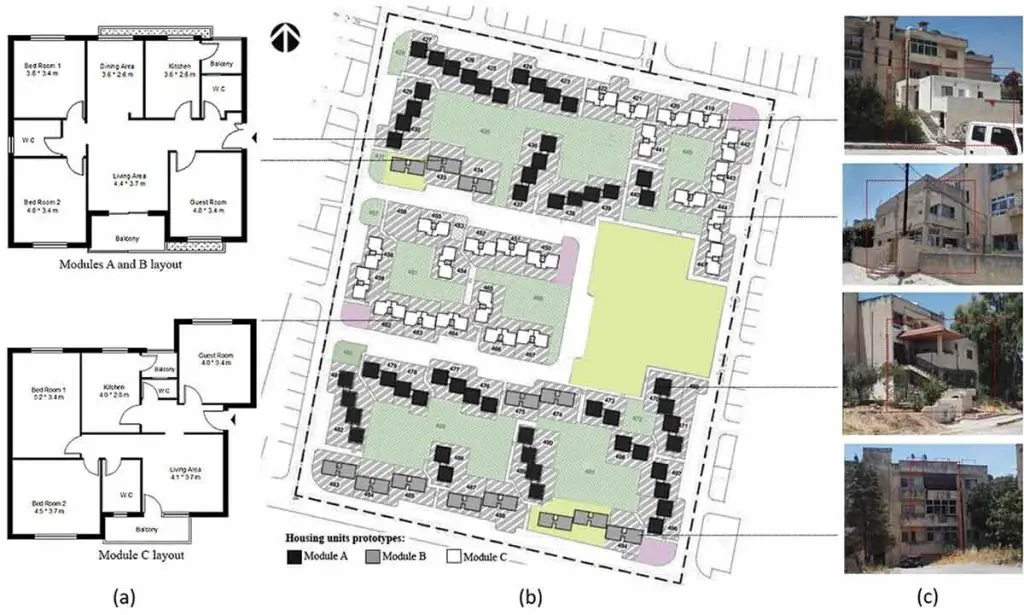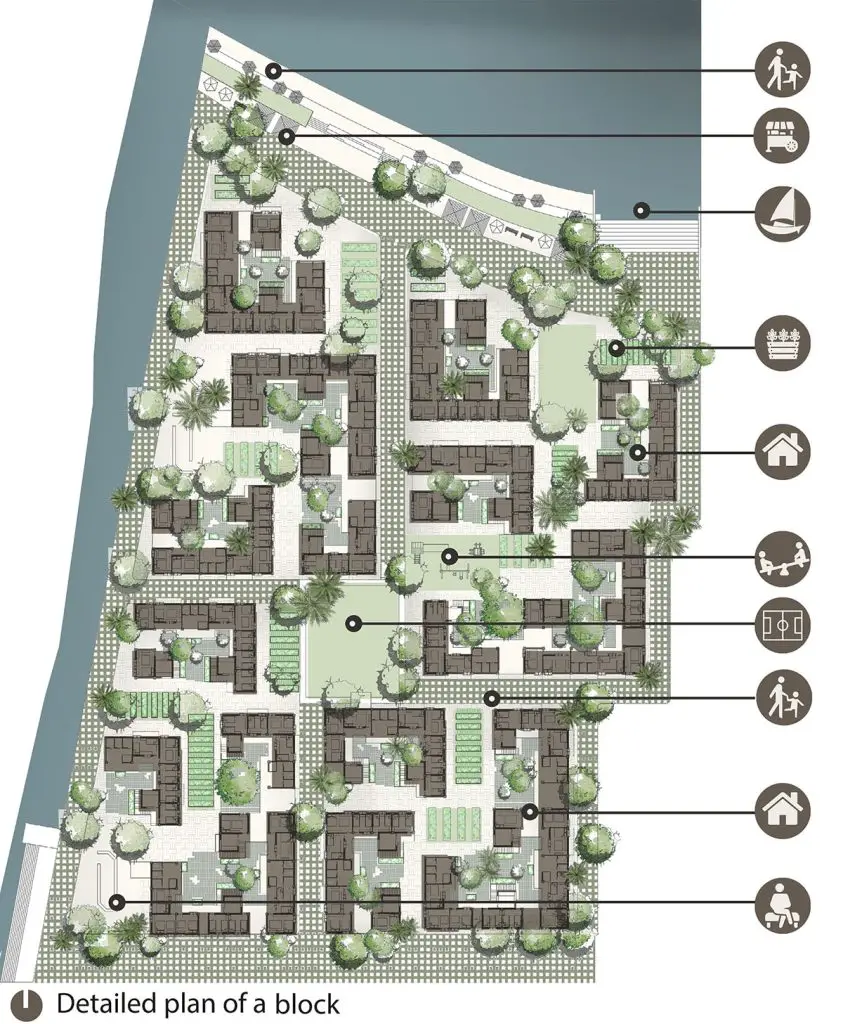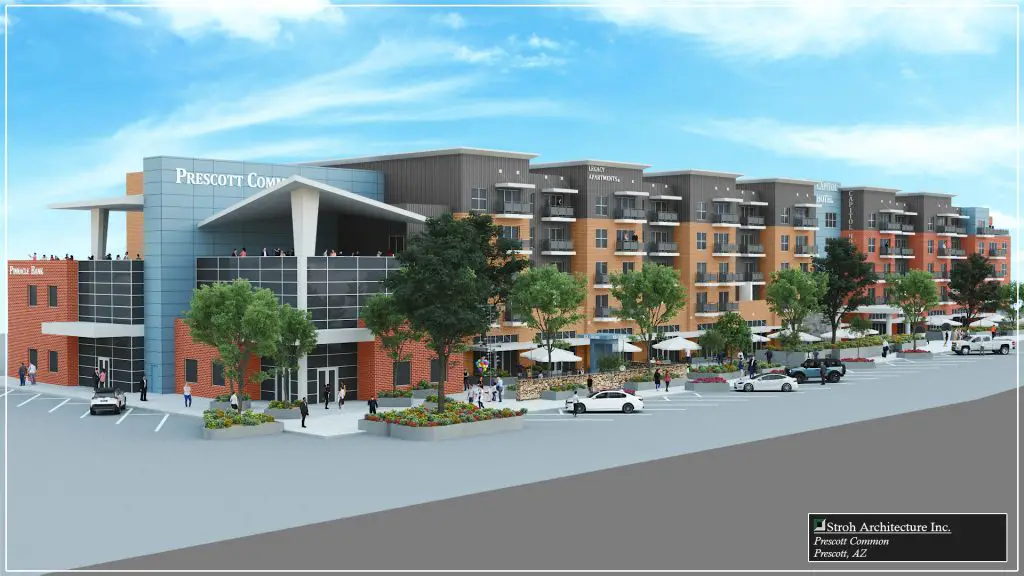Introduction
Prescott is not just a city—it’s a tapestry woven with history, tradition, and modernity. The unique architectural footprint of this charming Arizonan city is influenced immensely by its local culture.

This article dives into the impact of Prescott’s local culture on housing and urban design. From its indigenous roots to its modern facades, each corner of Prescott tells a tale of cultural amalgamation.
Prescott’s Architectural Evolution
Prescott’s architectural evolution is a captivating journey, mapping the city’s transformation from a frontier outpost to a modern urban center. Early structures, influenced by indigenous designs, utilized materials like adobe, reflecting the practical needs and cultural imprints of the time.
As the gold rush era dawned, buildings evolved to mirror the Victorian and Spanish colonial styles, with ornate facades and detailed craftsmanship. The ranching traditions of the region birthed expansive homes with large porches and wide-open spaces.
Fast forward to the present, and one can observe a harmonious blend of these historical elements with contemporary designs, focusing on sustainability, efficiency, and modern aesthetics. Together, these myriad styles stand as a testament to Prescott’s rich architectural tapestry, shaped by time, tradition, and innovation.
Early Settlements: Indigenous Influence
Before the Victorians or the modernists marked their architectural signature, the Indigenous people played a pivotal role in shaping Prescott’s landscape. Their homes, built in harmony with nature, reflected a deep understanding of the land and its resources. Natural Homes showcases indigenous homes from around the world and the significance they hold. Prescott’s early settlements were no different, utilizing materials at hand, prioritizing sustainability, and valuing community.
Stone and earth became the canvas upon which the indigenous population painted their lifestyles. The terracotta hues, the low-slung roofs, and the community-centered plaza designs can still be glimpsed in certain Prescott neighborhoods, a testimony to their long-lasting influence.
Victorian Era: A Boom in Style and Substance
By the mid to late 19th century, Prescott was under the sway of the Victorian architectural renaissance. Ornate facades, wrap-around porches, and gabled roofs began to define the city’s skyline. As the National Park Service points out, Victorian architecture was more than just a style; it was a statement of affluence and social standing.
Houses from this period are easily distinguishable by their intricate woodwork and expansive designs. They signaled Prescott’s rapid development, with new settlers bringing in ideas from the East Coast and Europe, further enriching the local culture.
The Cultural Landscape of Prescott
The cultural landscape of Prescott is a vivid tapestry woven with threads of indigenous legacies, frontier histories, mining tales, and ranching traditions. This city, once a pivotal outpost in the American West, has retained its unique character through the ebb and flow of time.
Its streets echo tales of Native American communities, gold rush adventurers, and cattle ranchers. Iconic events, such as the Prescott Frontier Days and the World’s Oldest Rodeo, provide glimpses into its vibrant cultural ethos.
Moreover, local festivals, art galleries, and heritage museums further enrich Prescott’s cultural milieu, ensuring that every corner of the city resonates with stories from yesteryears while embracing the evolving narratives of its diverse modern-day community.
The Role of Festivals and Traditions
Prescott’s vibrant festivals and traditions are not just events; they’re community-binding forces. From the celebrated Prescott Frontier Days to the Courthouse Lighting during Christmas, the city has always prioritized communal gatherings. Such traditions demand spaces—amphitheaters, open grounds, and wide streets like those seen around Prescott’s Courthouse Plaza.
In a city where traditions are as significant as the buildings themselves, it’s only logical that public spaces would be designed to accommodate the throngs of revelers and spectators.
The Arts and Crafts Movement
The early 20th century witnessed the rise of the Arts and Crafts movement in Prescott. Prioritizing handcrafted aesthetics over mass production, this trend profoundly influenced the city’s homes and public buildings. The Craftsman offers insights into how this movement emphasized simplicity, functionality, and local materials.

You can spot these influences in Prescott’s bungalows with their exposed wooden beams, large porches, and hand-crafted tiles. This movement didn’t just influence housing but extended to furniture, ceramics, and even textiles.
Influences on Housing Design
Prescott’s housing design is a captivating blend of various influences, both historical and contemporary. Drawing from its rich Native American heritage, ranching traditions, and Spanish colonial history, homes often showcase elements like adobe walls, terracotta roofing, and expansive porches.
Modern influences aren’t left behind, with newer homes incorporating sustainable technologies, open-floor plans, and energy-efficient features. Furthermore, the city’s natural landscapes, from its rolling hills to dense pine forests, play a pivotal role, in guiding the placement of homes and the utilization of natural light.
Together, these myriad influences create a housing tapestry in Prescott that is both deeply rooted in its past and keenly attuned to present and future needs.
Ranch-Style Homes: A Nod to Prescott’s Cowboy Heritage
Prescott’s cowboy legacy is celebrated far and wide. What’s more intriguing is how this cowboy culture has influenced its housing design. Ranch-style homes, with their long, low, ground-hugging profile, are reminiscent of the old Western ranches. A piece on Ranch-style homes details how these designs prioritize open spaces and ease of access—perfect for the Prescottian who values both tradition and functionality.
The long roofs, wide eaves, and open floor plans are a testament to a lifestyle that valued community, nature, and simplicity.
Pueblo Revival: Echoes from Native American Tribes
The Pueblo Revival style, inspired by the ancient homes of the Pueblo Indians, is another significant feature of Prescott’s housing landscape. Thick walls, rounded exteriors, and timber accents characterize this style. As detailed by Santa Fe Travelers, the Pueblo Revival architecture is more than just aesthetics; it’s about harmony with the environment.
In Prescott, these designs don’t just reflect cultural appreciation, but also a nod to sustainable practices, given the insulating properties of the thick adobe walls.
The Modern Twist: Adapting to Contemporary Needs
As with every evolving city, Prescott has seen a shift toward modern architectural designs. Contemporary homes in Prescott effortlessly blend the old with the new. Large windows, sustainable materials, and modular designs are becoming increasingly popular, reflecting the global trend towards minimalism and eco-friendliness, as pointed out by Dwell.
Yet, even these modern designs often incorporate elements from Prescott’s diverse architectural heritage, creating homes that are as unique as the city itself.
Local Materials and Sustainability
Prescott’s architectural ethos is deeply rooted in the utilization of local materials, embodying both a respect for tradition and a commitment to sustainability. By harnessing materials such as adobe, timber, and locally-sourced stone, the city ensures that its buildings are not only emblematic of its cultural heritage but also environmentally responsible.
This emphasis on local materials reduces transportation-related emissions, supports local industries, and ensures that structures are aptly suited for the region’s climate. In essence, Prescott’s approach to using local materials is a harmonious blend of environmental stewardship and cultural authenticity.
Use of Adobe and Timber
Local materials like adobe and timber have been staples in Prescott’s architecture. Adobe, with its cooling properties, is perfect for the Arizona climate. Timber, abundantly available from surrounding forests, offers both aesthetics and functionality. A report by Build With Rise delves deep into the sustainable benefits of using local materials.
- Advantages of using Adobe:
- Natural insulation
- Cost-effective
- Environmentally friendly
- Benefits of Timber:
- Versatility in design
- Durability
- Carbon footprint reduction
Landscaping with Native Flora
Prescott homes often feature gardens teeming with native flora. Using local plants not only reduces water consumption but also supports local biodiversity. Native Plant Society emphasizes the role of native plants in sustainable landscaping. In Prescott, gardens aren’t just about aesthetics; they’re about creating ecosystems.

The Intersection of Culture and Urban Planning
At the heart of Prescott’s urban planning lies a profound respect for its cultural heritage. This intersection of culture and urban design ensures that the city’s evolution doesn’t just cater to modern amenities and infrastructural needs, but also reverently echoes its rich historical and cultural narratives.
Such an approach makes the cityscape a living tapestry, where every street, building, and public space is a testament to Prescott’s storied past, yet vibrantly attuned to the aspirations of its present and future residents.
Public Spaces: Celebrating Prescott’s Collective Spirit
Public spaces in Prescott are more than just patches of land. They are venues for cultural celebrations, communal gatherings, and artistic expression. The Courthouse Plaza, Whiskey Row, and the numerous parks dotted around the city reflect the community’s need to congregate, celebrate, and share. According to Project for Public Spaces, such areas play a crucial role in fostering community spirit and defining a city’s cultural identity. Prescott’s public spaces are meticulously designed to ensure accessibility, inclusivity, and a sense of shared ownership among its residents.
Transportation: Riding the Tides of Tradition and Modernity
Prescott’s transportation infrastructure marries tradition with modernity. Wagon trails of the past have metamorphosed into bustling streets, but they retain hints of their historical routes. The city layout respects its cowboy and ranching roots, offering spacious roads that evoke memories of horse-led carriages.
Yet, modernity isn’t left behind. As highlighted by the American Planning Association, effective urban design must cater to contemporary transportation needs without compromising historical integrity. Prescott’s streets and public transportation options cater to the modern resident while nodding respectfully to its storied past.
Preservation Efforts: Balancing the Old and New
In Prescott, the interplay between preserving history and embracing modernity forms the cornerstone of its urban landscape. The city’s preservation efforts are not just about safeguarding old structures but about breathing new life into them, ensuring they remain relevant in today’s context.
This delicate balance, achieved through initiatives like adaptive reuse and meticulous care of historic districts, underscores Prescott’s commitment to honoring its past while forging a vibrant, forward-looking future.
Historic Districts and Their Cultural Value
Prescott’s historic districts are more than just zones on a map. They’re living museums that echo tales from bygone eras. The Downtown Historic Preservation District, for instance, is a delightful mosaic of different architectural styles, each telling its own story. Preservation Magazine underscores the importance of such districts in preserving a city’s soul and offering tangible connections to its past.
These districts aren’t just about preservation; they’re also about adaptation. Modern businesses thrive in century-old buildings, showcasing the city’s commitment to both history and progress.
Adaptive Reuse: Breathing New Life into Old Structures
Instead of tearing down old structures, Prescott often opts for adaptive reuse, a practice of repurposing buildings for modern needs while retaining their historic charm. The old firehouse turned into a bustling brewery or a Victorian mansion transformed into a bed-and-breakfast are testaments to this approach. ArchDaily frequently spotlights such innovative adaptive reuse projects, emphasizing their environmental and cultural benefits.
In Prescott, this practice ensures that while the city’s face may change, its heart remains rooted in history.
The Role of Community Engagement
Community engagement is the lifeblood of Prescott’s urban development. Rather than mere spectators, the residents of Prescott are active participants, directly influencing the city’s architectural and design evolution.
This democratic approach ensures that the city’s growth is both reflective of its residents’ aspirations and respectful of its historical and cultural roots. In essence, Prescott’s urban landscape is a collective creation, woven together by the diverse threads of its community’s insights, needs, and dreams.
Citizens’ Say in Urban Design Projects
Community meetings, public forums, and open discussions ensure that Prescott’s residents have a say in its urban development projects. Such participatory approaches, endorsed by platforms like Strong Towns, ensure that urban design is both for the people and by the people.
Prescott’s community-centric approach ensures that projects are not just top-down impositions. They evolve organically, imbibing inputs from the very people who call the city home.
Local Artisans and Their Influence on Architecture
Local artisans in Prescott have a significant say in the city’s architectural designs. Their skills, honed by tradition and fine-tuned by modern techniques, add unique touches to homes, public buildings, and open spaces. Websites like Craftsmanship Quarterly celebrate such artisans who ensure that local culture finds tangible expressions in bricks, wood, and metal.
In Prescott, houses might have handcrafted tiles, public spaces could showcase local sculptures, and streets might be lined with artisanal benches. Each piece tells a story, and each design celebrates the local.
Critiques and Lessons from Prescott’s Urban Design Journey
Prescott’s journey in urban design is a testament to the challenges and triumphs of blending tradition with modernity. While the city has been lauded for its commitment to cultural preservation, it has also faced hurdles in adapting to contemporary needs without diluting its historical essence.
This balance, teetering between the old and the new, offers invaluable insights for urban planners. Prescott’s experience showcases that while the path of intertwining culture with urban design can be intricate, it’s a journey worth undertaking for a richer, more inclusive urban tapestry.
Challenges Faced in Upholding Cultural Integrity
Maintaining a balance between modern demands and historical integrity is challenging. Rapid urbanization sometimes threatens Prescott’s cultural landmarks. These challenges, documented extensively by CityLab, highlight the perpetual tug-of-war between progress and preservation.

Yet, Prescott’s consistent effort to prioritize culture in its urban design decisions offers hope. Compromises are made, but they are always weighed against cultural costs.
Best Practices Adopted by Other Cities
Prescott’s dedication to preserving its cultural identity while catering to modern needs has made it a model for many cities. From its community engagement practices to its emphasis on local artisans, many of its strategies are being adopted elsewhere. The Urban Land Institute cites numerous instances where Prescott’s approach has inspired urban design projects worldwide.
Prescott stands as proof that cities can modernize without erasing their past. The fusion of the old and new, the melding of history with the future, is not just possible—it’s achievable.
FAQs:
In this section, we will be delving into some of the most common inquiries and curiosities that surround our topic.
How has Prescott’s local culture impacted its skyline?
Prescott’s local culture has profoundly influenced its skyline. From Pueblo Revival houses to modern ranch-style homes, the city’s architecture is a reflection of its rich cultural tapestry.
Are there specific building materials synonymous with Prescott’s architecture?
Yes, local materials like adobe and timber have been mainstays in Prescott’s architecture. Their use is both a nod to sustainability and an homage to the city’s history.
How does the community in Prescott participate in urban design decisions?
The community in Prescott actively participates in urban design decisions through public forums, community meetings, and open discussions. This participatory approach ensures that the city’s development is in line with its residents’ aspirations.
What lessons can other cities learn from Prescott’s urban design journey?
Other cities can learn the importance of balancing modern development with cultural preservation. Additionally, community engagement and the value of local artisans in shaping a city’s architectural landscape are key takeaways.
Conclusion
Prescott, with its enchanting blend of history, culture, and modernity, stands as a beacon for urban designers worldwide. Its story underscores the importance of cultural roots in shaping cityscapes.
As cities evolve, they must remember that their buildings, roads, and public spaces are more than just infrastructure—they’re the soul of the community, echoing tales from the past while whispering dreams for the future.



Leave a Comment
You must be logged in to post a comment.